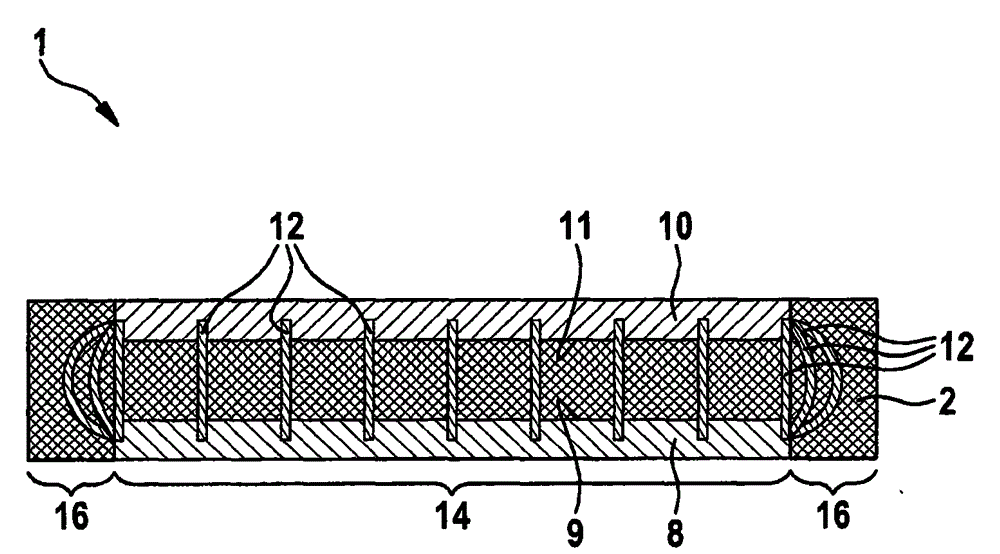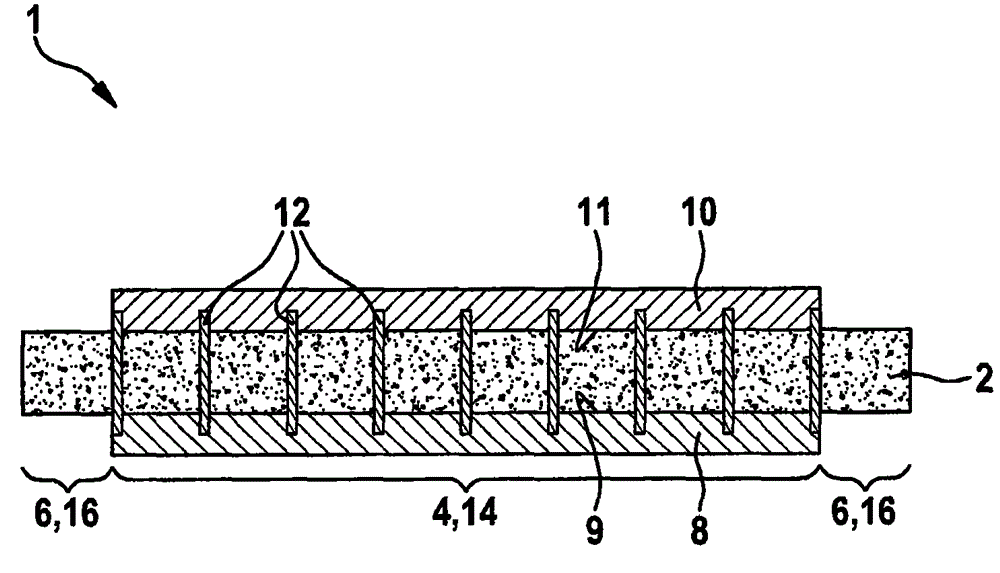Galvanic Element
A primary battery and electrode technology, applied in the field of primary batteries, can solve problems such as lithium deposition and battery safety damage
- Summary
- Abstract
- Description
- Claims
- Application Information
AI Technical Summary
Problems solved by technology
Method used
Image
Examples
Embodiment Construction
[0044] figure 1 Denotes a primary cell 1 according to the prior art. Galvanic cell 1 comprises a layer sequence with positive electrode 8 , separator 2 and negative electrode 10 . The positive electrode 8 is connected by its active face 9 to the separator 2 and the negative electrode 10 is also connected by its active face 11 to the separator 2 .
[0045] The positive electrode 8 comprises, for example, an aluminum film as a support, on which an active material based on a combination of different lithium metal oxides is applied. Negative electrode 10 is, for example, a copper foil on which an active material based on natural and / or synthetic graphite is applied.
[0046] The material of the separator 2 is, for example, polyolefin and has many micropores through which electrolyte can penetrate into the separator 2 . The electrolyte is, for example, a lithium conducting salt dissolved in an organic solvent, such as lithium hexafluorophosphate (LiPF 6 ). Separator 2 is itsel...
PUM
 Login to View More
Login to View More Abstract
Description
Claims
Application Information
 Login to View More
Login to View More - R&D
- Intellectual Property
- Life Sciences
- Materials
- Tech Scout
- Unparalleled Data Quality
- Higher Quality Content
- 60% Fewer Hallucinations
Browse by: Latest US Patents, China's latest patents, Technical Efficacy Thesaurus, Application Domain, Technology Topic, Popular Technical Reports.
© 2025 PatSnap. All rights reserved.Legal|Privacy policy|Modern Slavery Act Transparency Statement|Sitemap|About US| Contact US: help@patsnap.com


